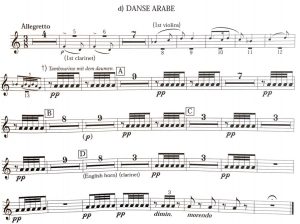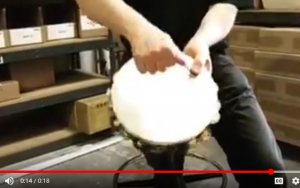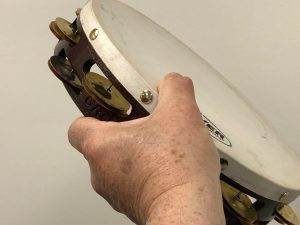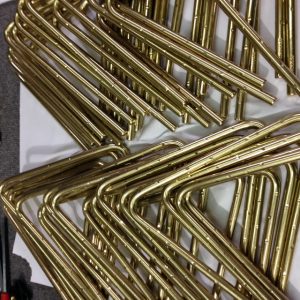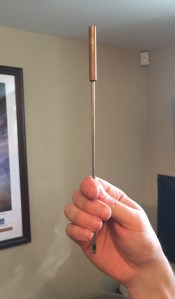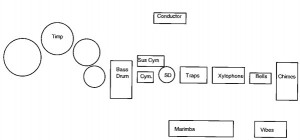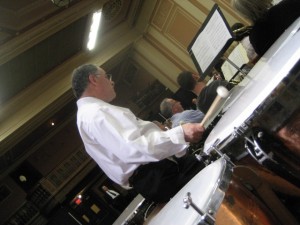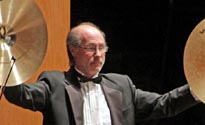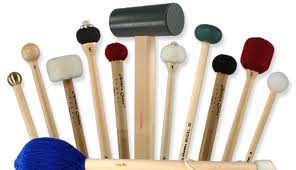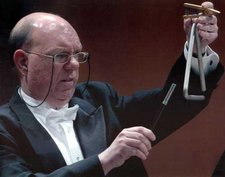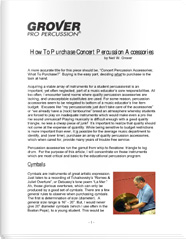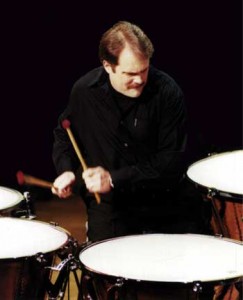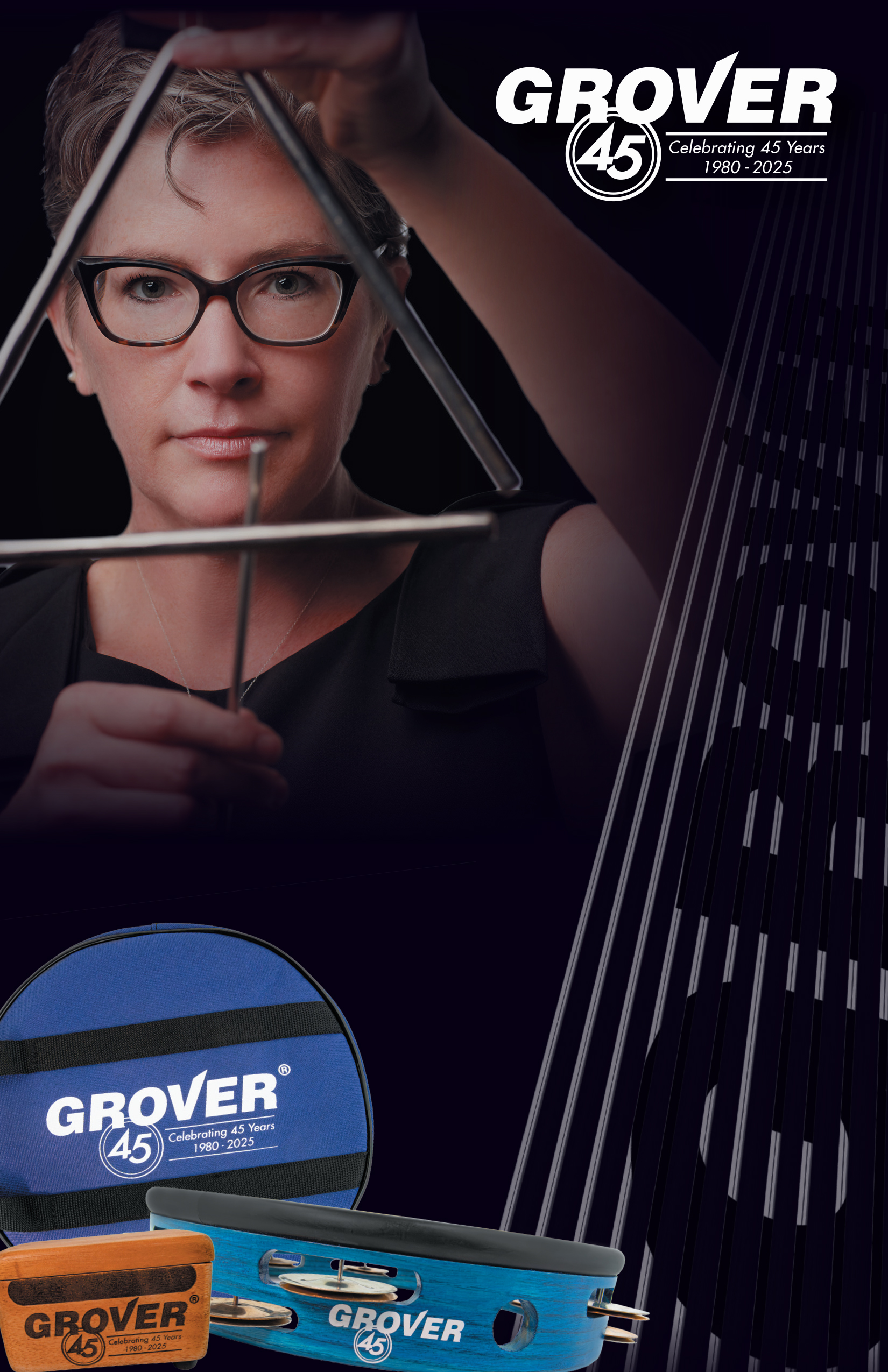David Valdés delves deep into Igor Stravinsky’s “Histoire du Soldat,” underscoring its importance in the percussion repertoire. Valdés details his access to the original sketches which illuminate Stravinsky’s intended drum setup and compositional process. In advance of his PASIC 2024 presentation, he shares new insights in…
In Search of the Missing (Timpani) Fundamental
The acoustics of timpani, including the art of tuning and clearing timpani heads have long fascinated timpanists. Pro timpanist and percussion scholar Richard K. Jones delves into this intriguing subject in his comprehensive and eye opening webbook, “The Well-Tempered Timpani”. Devoted to understanding the physics of timpani and the…
Tchaikovsky’s “Arabic Dance” – Articulate or Roll?
by David Valdés “The Nutcracker” is a work that, despite being part of the repertoire and being performed/played very often (specially during Christmas), it is played with some mistakes due to a wrong interpretation of the instructions given by Tchaikovsky and the writing that he…
Percussion Accessory Clinic w/Neil Grover
Watch Neil Grover’s 2023 PASIC presentation, “Percussion Accessories – Not as easy as you may think!”. Neil Grover’s PASIC 2023 Masterclass “Video used with permission. The Percussive Arts Society (PAS) is the world’s largest percussion organization, with over 5,000 members in over 80 Chapters across…
LIEUTENANT KIJÉ AND A PECULIAR TAMBOURINE TECHNIQUE
We all know Prokofiev´s “Lieutenant Kijé” and its overly famous snare drum part, but the tambourine one in the fourth number, “Troika”, tends to go unnoticed. Prokofiev wrote a circle above the first quarter-note of each bar: This is the same notation that Glazunov had…
Excellent Advice On Executing Finger Rolls
Prince Igor’s Tambourine Mystery (part 2)
by David Valdés In the previous article we got to know the tambourine part of the “Polovtsian Dances” was written by Glazunov and not by Borodin. We now can pull the thread to try to figure out the meaning of that notation and the technique…
Tambour – Which Is It?
THE PROVENCAL DRUM Today we´ll talk about a traditional instrument that has made its way into the symphony orchestra. The drum we are refering to is many centuries old and common to quite a few countries, but its French name (and its similarity to an…
Questions To Ask When Learning A Piece Of Music
Unless you have a) learned all the music there is to learn in this world, or b) chosen that you don’t want to learn any more music in your lifetime, then learning new music is in your future! As an active performer, I’m constantly learning…
Finding the “Sweet Spot”
Professional percussionists often mark the “sweet spot” on instruments. This “targeting” helps percussionists to consistently sound their best. I have always placed light pencil marks on accessories such as cymbals, woodblocks and even triangles! Click the image to watch a short video demonstration…
Sistro, Sistri and Sistrum in “Il Barbiere di Seviglia”
It now seems like a tradition; every time “Barber” gets on the music stand, a discussion arises about what sistro, sistri and sistrum mean and what instruments correspond to that nomenclature. I´ll try to clarify this issue, and I´ll begin with a little bit of…
Percussion Quick Tip: Flamenco Style Castanet Trick
Percussion Accessory Note Duration – The Mystery
When playing triangle, tambourine and cymbal parts of the 18th, 19th and early 20th centuries – the exact duration of a note can often be unclear. While composers of those periods were good at notating when to start a note, more often than not, they…
Percussion Quick Tip: Play Fast Tambourine Passages
When it comes to playing loud, fast passages on tambourine, especially when the tempo is too fast to play using one hand, the fist/knee technique proves invaluable! CLICK THE IMAGE TO LEARN MORE…
The Magic 45°
I have often been asked about my tambourine grip, and while I employ a range of variations, my basic “go-to” technique is to hold the tambourine at a 45° angle to the floor. The reason is simple – it produces a balanced jingle sound. Think…
Percussion “Quick Tips” Launched!
We’ve started posting individual 30 second instructional videos that will cover a wide-range of topics. New “quickies” will be added each week, so, if you like what you see, check our Youtube Quick Tips playlist for more valuable goodies!
Thoughts From A Department Recital
Dear Music Majors, Let’s discuss recital performance etiquette briefly. Going on stage to perform is an important part of your training as a musician and teacher but is also the culmination of all your hard work in the practice room working at perfecting your craft…
How to Travel to an Audition: What to bring and how to get it there!
For percussionists, traveling to auditions can be more challenging than playing the audition. We have to get ourselves, as well as a shopping cart full of gear to the audition, that could be halfway around the world. We are not the only ones that have…
Why are we so out-of-tune?
Good intonation is one of the pillars of musicianship for those of us who play pitched instruments. It’s also an area in which many timpanists struggle; it was one of the major issues which kept applicants from advancing at last year’s DSO timpani/percussion audition, and…
Tips for Moving to a New Country: What Gear to Bring
When I was preparing to move to China to start my new job with the Wuhan Philharmonic, I had a rather large list of concerns. There were the normal hassles of moving to any city, such as securing an apartment, getting phone and Internet set…
Amassing and Choosing the Most Appropriate Sounds
People often ask me, “Why do you have so many tambourines?” Usually this question comes from a non-percussionist. It’s a good question—one that many of us have answered a thousand times. When discussing this topic with colleagues, I often think of an editorial written by…
Guidelines for the New Theater Percussionist
Many percussionists delving into the musical theater world, for the first time, find this new venture a bit daunting. Often the classical training acquired doesn’t fully prepare one for playing a musical theater show. The evolving process of performance preparation goes far beyond the…
Setting Goals In Percussion
I recently had a discussion with the percussion studio at Southeastern University regarding goals. I am asking the students to set some goals for themselves and for the studio as a way to better understand their purpose and direction during their time at SEU —…
Taking A College Audition?
College professors will gather as much information about prospective students as possible to determine if the student will be a good fit for their program. For students, the college audition process can be a scary endeavor with a lot of unknowns. The following areas of…
Rob Knopper’s “what to do if you make a mistake in orchestra”
This article originally appeared on robknopper.com what to do if you make a mistake in orchestra my hilarious epic fail on tam-tam happened 7 years ago this month. in 2008 i got into my first major summer festival: pacific music festival in japan. i was 21,…
Technique Improvement and Maintenance: Warm Up Routines – Triangle by Will James
Holding the triangle Holding the triangle should look graceful. We want to at least look professional. Resting the clip on the thumb and middle finger, leaves the other fingers available for muting if necessary. Holding the triangle around eye level is preferred so the audience…
Which Model Tambourine Should I Buy?
One of the most common statements we hear from percussion students is, “My teacher told me to purchase a tambourine, but I don’t know which one to choose“. Given the fact that we offer 28 different models this is not surprising! Our time-tested model T2/GS…
An Organized Percussion Section: The Key To Success by John R. Beck
Getting Organized. We all aspire to it. We know it will make our jobs easier. We know that our students will learn more quickly and become better performers. Then, if we are successful by May, a new group of students shows up the following year…
Percussion Accessories: Musical Instruments or Weapons of Mass Destruction?
A common mistake made by non-percussionist music educators is the relegation of weaker percussion students to the bass drum and cymbal chairs. While it may seem reasonable to assign the “harder” parts to stronger percussion students, in actuality it is the accessory instruments that are…
Timpani Calisthenics
Here’s a free download of my timpani warm-up exercises. They have been developed over many years for my personal use. The focus is on hand/arm conditioning with an emphasis on stick crossing. Timpani Calisthenics can be played by timpanists of all levels. DOWNLOAD TIMPANI CALISTHENICS
Advice To College Music Students by Michael D’Angelo
I started teaching at the University of North Carolina Wilmington right after finishing my Master’s degree at Indiana University in 2012. While I wasn’t expecting to get back into academia so quick, it was enlightening to get the teacher’s perspective, especially in a smaller school…
Grover Pro Castanet Primer
Click here for more info and to buy now.
Ten Useful Tips For Percussionists
by Dr. John Beckford
Assist your colleagues in striking the stage following a percussion recital — even it you didn’t play. This is common courtesy and will be greatly appreciated when you are the performer. Arrive far enough in advance of a rehearsal to guarantee that all equipment is…
Successfully Show Your Stuff by Grant Dalton
As percussionists we are called on to play countless instruments and their appropriate styles. Here, from Grant Dalton, are six important tips to consider when called on to play a “Broadway” type show: 1. Find out everything that you can about the show that you…
Five Tips To Perfecting A “Thumb Roll”
Many young percussionists have trouble executing a tambourine thumb or finger roll. While it is a relatively easy technique to master, students often ignore spending the time necessary to develop good technique. Here are a few tips to expedite the learning process: Keep the thumb…
Do Yourself A Favor by John Parks
One of the biggest lessons I learned out of school was that subbing in professional orchestras did not mean playing snare drum, xylophone, or bells–or timpani. It meant being really, really good at the stuff I never played in lessons (other than for audition preparation)–triangle,…
Five Percussionist “Must Haves” by Peter DeSalvo
Towel– Having a tray to place mallets, sticks, beaters and small percussion instruments on is an important accessory for a percussionist, but unless it’s carpeted or foamed it could be a source of noise that is unmusical, offensive and unwanted. Having a towel (preferably not…
Five Hints For Playing Concert Bass Drum by Robert McCormick
Here are some tip for playing bass drum – aka:gran cassa, grosse trommel, grosse caisse Tune the drum as low as possible without sounding flabby. Most people tune the beating head looser than the vibrating head. The important thing to remember is not to set…
A Percussionists Guide To Subbing A Show by David Edricks
As percussionists, one of the most challenging skills to learn is subbing a percussion book for a show. It is a skill set that you must master to be fully prepared for the career challenges that lie ahead. In most situations, you will be expected…
Mallet Selection Guidelines by David Collier
One of the most important musical choices a percussionist makes—regardless of the instrument—is mallet selection. Selecting the most appropriate mallet for a passage makes all the difference but with the hundreds of mallets available, how does one make this choice. Here are some principals that…
Playing Mallet Instruments Musically by Dean Anderson
While there are a number of different mallet instruments that we perform on as percussionists (marimba, xylophone, glockenspiel, chimes, etc.), there is one important aspect to include in your performance; playing with phrasing and musicality. Of course, this is easy to say, though, hard to…
Six Triangle Tips From Chris DeChiara
Always hold the triangle between the music and conductor where you can see both without moving your head. Experiment with different playing areas-and the amount of beater surface-to get the optimal sound for the specific passage. Experiment with different triangles to get the optimal sound…
How to prepare for a first orchestra (or other) rehearsal by Angie Nelson
Prepare your music at home first. Obtain your parts from the orchestra or ensemble that is employing you. Don’t feel bad about bothering a principal percussionist or librarian. It’s their job to get you the music so you have enough time to prepare it thoughtfully.…
Multi-Percussion by Casey Cangelosi
Multi-Percussion is a fantastic musical medium that can invite equal creative energy from both the composer and performer. Below are three ideas I like to be mindful of. Consider what multi-percussion is. The composer is asking you to combine several different percussion instruments to create…
Neil Grover “Chimes In”
Chimes, (or tubular bells), are perhaps the most awkward percussion instrument to play. They are bulky, rather tall, and like all keyboard percussion instruments, you need to visually locate the correct note to accurately strike. That makes it almost impossible to read music, watch a…
Going…Going…Gong
Tchaikovsky’s Symphony #6 includes one solo soft gong (tam-tam) note in the last movement. Ask any orchestral percussionist, playing this note at just the right dynamic level can be a tricky ordeal. Last week, while playing this part with the Boston Symphony at Tanglewood, I…
Tambourine Lesson From Dr. John Parks IV
Here’s a great new tambourine lesson from Florida State University Professor John Parks. In addition to his duties at FSU, John performs with the Tallahassee Symphony and is the President-Elect of the Percussive Arts Society.
How To Hold & Strike The Concert Tambourine
We’re constantly adding to our “Tech-Talk” section of our website. The newest video lesson is from percussion educator Patrick Herring, who breaks down the elements of holding and striking the tambourine. As Director of the percussion ensemble for the Greater Dallas Youth Orchestra, Patrick works…
5 Things To Remember When Playing Tambourine
Playing a concert tambourine at a high level of proficiency takes patience, practice and good technique. Like any percussion instrument, it is an accessory that serious percussionists make the time to practice and master! THE FIVE TIPS TO REMEMBER For general playing hold the tambourine…
5 Things To Remember When Playing Triangle
As George Plimpton once discovered, playing triangle in a symphony orchestra is not as easy as it appears. Producing a musical sonority, striking in the right place – at the right time, stricking at just the right velocity and pressure and enduring the ridicule of…
How to Purchase Concert Percussion Accessories
Here’s some general percussive advice geared towards my music educator colleagues. This piece, original written for SB&O magazine, serves to provide insight into the task of acquiring proper basic percussion accessory instruments. The percussion instruments covered include: concert tambourine, piatti or hand cymbals, woodblock, temple…
New Tech-Talk From Will James!
St. Louis Symphony Principal Percussionist Will James recently sent us this informative video with some really useful tips on playing the chimes. Also known as “tubular bells”, many players assume that it is easy to play orchestral chimes. Nothing could be farther from the truth!
Tech-Talk: “The Truth About Practice and Performance”
Please read Grover Pro endorser Andy Harnsberger’s excellent article for the July 2011 Percussive Notes, “The Truth About Practice and Performance” (reprinted with permission). A link to the article can also be found on our Tech-Talk page.
New Educational Videos
We’ve added new educational videos to our “Tech-Talk” feature on this web site. Three new videos feature both Neil Grover (on holding the tambourine and triangle), and Indiana University Professor John Tafoya (on timpani stick grips). Holding a Tambourine Holding a Triangle Timpani Grips with…

